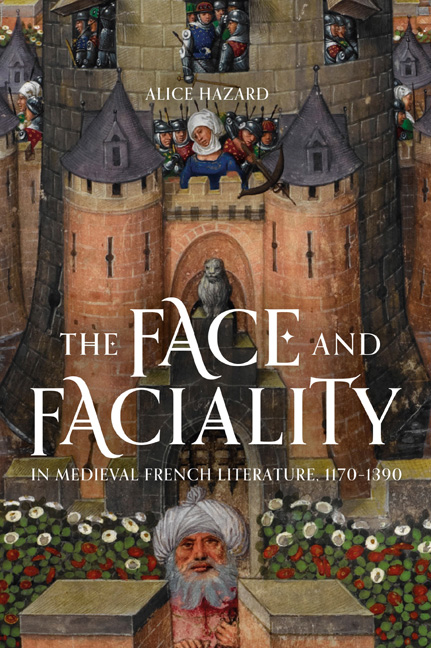Summary
In the late twelfth-or early thirteenth-century romance Le Bel Inconnu, the hero takes his helmet off, revealing his face and, he assumes, himself, to the Pucelle aux Mains Blanches:
Guinglains l’avoit bien coneüe
De si lonc con il l’ot veüe.
Son cief et son vis desarma;
Errant vint, si le salua.
[Guinglain had known her for a very long time when he saw her. He uncovered his head and face; she immediately came and greeted him.]
When, somewhat anticlimactically, she fails to make the association between his face and his identity, the knight is forced to explain. There is, in this scene, a crucial and, to modern readers, startling disjunction between the characters’ expectations placed on the face as a marker of individual identity. Guinglain assumes that because the pucelle has already seen his face and already knows him, she will have made a clear association between the two, such that his face will suffice as a sign of his identity and presence. She, on the other hand, seems to have made no such connection and requires an altogether different guarantee. We witness the converse situation in the slightly later Hunbaut: the chastelaine of the castle of Gaudestroit is in love with Gauvain, having never seen him. She has a statue made of her would-be lover which is, nonetheless, so realistic that Kay, Yder and Giflet, who all know Gauvain well, believe it to be Gauvain himself and are persuaded otherwise only when the dame tells them that it is just a statue. Here, the connection between the visual sign of a face and the identity and presence of its ‘owner’ is so strong as to overreach the reality of the situation. Neither episode is central to its respective narrative, and each seems very casually and yet profoundly disruptive of the connection between face and essence, either over-or understating its status. The same thing occurs in other motifs and guises of the broader period: in narratives of resemblance, such as the twelfth-century conte, Floire et Blanchefleur, Marie de France's Fresne, or the thirteenth-century Roman de la Manekine, characters’ physical similarities often give rise to uncanny recognition, to surprising misrecognition or to willing substitution.
- Type
- Chapter
- Information
- Publisher: Boydell & BrewerPrint publication year: 2021



